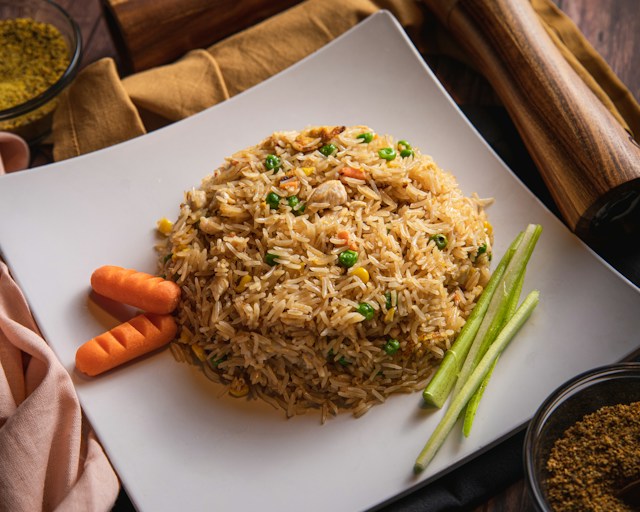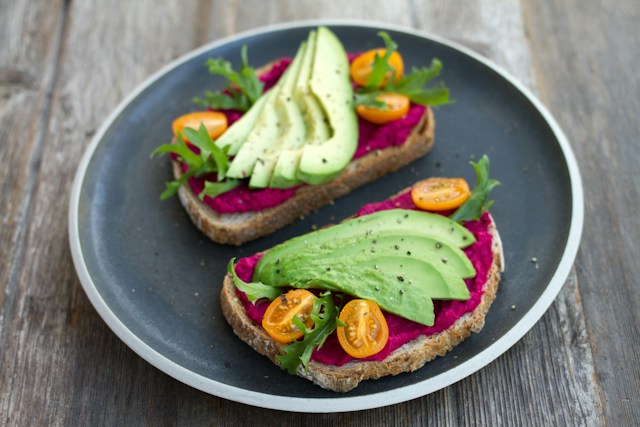Introduction:
Embarking on a journey to trim down your waistline involves a holistic approach that combines mindful eating, regular physical activity, and positive lifestyle changes. While spot reduction may not be feasible, adopting healthy eating habits plays a pivotal role in achieving a slimmer waistline. In this guide, we explore ten effective eating habits that, when incorporated into your daily routine, can contribute to whittling away at that stubborn midsection within the span of 30 days.
Prioritize Nutrient-Dense Foods: The Foundation of a Healthy Diet:
Load Up on Veggies: Vegetables are packed with essential vitamins, minerals, and fiber, offering a low-calorie, nutrient-dense option for meals. Incorporate a variety of colorful vegetables to ensure a broad spectrum of nutrients.
Choose Whole Grains: Opt for whole grains such as brown rice, quinoa, and oats over refined grains. Whole grains provide sustained energy, fiber, and additional nutrients that contribute to overall health.
Lean Proteins: Include lean protein sources like poultry, fish, beans, and legumes in your meals. Protein aids in muscle preservation, contributes to a feeling of fullness, and supports metabolism.

Mindful Portion Control: The Art of Balanced Eating:
Listen to Your Body: Pay attention to hunger and fullness cues. Eat slowly, savor each bite, and stop when you feel satisfied. Avoid overeating by being mindful of portion sizes.
Use Smaller Plates: Trick your brain into feeling satisfied with smaller portions by using smaller plates. This visual illusion can help prevent overeating and promote portion control.
Pre-Portion Snacks: Prepare healthy snacks in advance to avoid reaching for less nutritious options when hunger strikes. Portion control extends to snacks, helping you stay on track with your overall caloric intake.

Hydration Matters: Optimize Your Water Intake for Weight Loss:
Water Before Meals: Drinking a glass of water before meals can help you feel fuller, reducing the likelihood of overeating. Staying well-hydrated also supports overall bodily functions and metabolism.
Infuse with Flavor: If plain water isn’t appealing, infuse it with natural flavors like lemon, cucumber, or mint. Herbal teas are another hydrating option that adds variety without unnecessary calories.
Limit Sugary Drinks: Cut down on sugary beverages like sodas and fruit juices. These drinks contribute to excess calorie intake and can sabotage your efforts to trim your waistline.

Choose Healthy Fats: Nourishing Your Body with Good Fats:
Include Omega-3 Fatty Acids: Omega-3 fatty acids, found in fatty fish, flaxseeds, and walnuts, offer numerous health benefits. They may help reduce abdominal fat and inflammation while supporting heart health.
Use Olive Oil: Opt for olive oil or other heart-healthy oils in cooking and salad dressings. These fats contribute to satiety and can be part of a balanced, waistline-friendly diet.
Limit Saturated and Trans Fats: Minimize intake of saturated and trans fats, commonly found in processed foods and fried items. These fats can contribute to weight gain and are detrimental to heart health.

Mindful Eating: Slow Down and Enjoy Your Meals:
Eat Without Distractions: Avoid multitasking while eating, such as watching TV or scrolling through your phone. Focus on the sensory experience of eating, savoring flavors and textures.
Chew Thoroughly: Chew your food slowly and thoroughly. This aids digestion and gives your body time to register feelings of fullness, preventing overeating.
Practice Gratitude: Take a moment before meals to express gratitude for your food. Cultivating mindfulness around eating can lead to better food choices and increased satisfaction.

Limit Added Sugars: Unmasking Hidden Culprits in Your Diet:
Read Labels: Be vigilant about reading food labels to identify sources of added sugars. Common culprits include sugary beverages, processed snacks, and sweetened condiments.
Choose Natural Sweeteners: Opt for natural sweeteners like honey or maple syrup in moderation. However, it’s essential to be mindful of overall sugar intake, even from natural sources.
Limit Desserts and Sweets: While an occasional treat is permissible, reducing the frequency of desserts and sugary snacks can significantly impact your calorie intake and aid in waistline reduction.

Incorporate Regular Meals and Snacks: Maintain a Consistent Eating Schedule:
Regular Eating Intervals: Establish a consistent eating schedule with regular meals and snacks. This approach helps stabilize blood sugar levels, curbing the temptation to overeat during subsequent meals.
Balanced Snacking: Choose nutrient-dense snacks that provide a combination of protein, fiber, and healthy fats. Greek yogurt with berries, a handful of nuts, or vegetable sticks with hummus are excellent choices.
Avoid Prolonged Fasting: While intermittent fasting is a popular approach for some, it’s crucial to find a pattern that aligns with your lifestyle. Prolonged fasting may lead to overeating during non-fasting periods.

Opt for Low-Calorie, High-Volume Foods: Bulk Up Your Meals Smartly:
Load Up on Fiber: Fiber-rich foods like fruits, vegetables, and whole grains add volume to your meals without a surplus of calories. This can contribute to a feeling of fullness, aiding in weight management.
Incorporate Leafy Greens: Leafy greens, such as spinach and kale, are low in calories but high in nutrients. They can be a significant component of meals, providing essential vitamins and minerals.
Choose Airy Snacks: Opt for snacks that are voluminous without being calorie-dense. Popcorn, for example, can be a satisfying and low-calorie option when prepared without excessive butter or oil.

Balanced Macronutrients: Finding Your Nutritional Equilibrium:
Protein-Packed Meals: Prioritize protein in your meals to support muscle preservation and increase feelings of fullness. Include lean meats, poultry, fish, tofu, and legumes as protein sources.
Healthy Carbohydrates: Embrace complex carbohydrates found in whole grains, fruits, and vegetables. These carbohydrates provide sustained energy and contribute to overall well-being.
Moderate Fats: Include moderate amounts of healthy fats in your diet for satiety and nutrient absorption. Avocado, nuts, seeds, and olive oil are excellent sources of healthy fats.

Consult a Professional: Personalizing Your Approach for Success:
- Seek Guidance: Before embarking on any significant dietary changes, consider consulting with a registered dietitian or nutritionist. These professionals can provide personalized advice based on your unique needs, preferences, and health status.
- Address Individual Requirements: Dietary requirements vary among individuals, and what works for one person may not be suitable for another. A personalized approach ensures that your dietary plan aligns with your health goals and lifestyle.
- Long-Term Lifestyle Changes: Sustainable waistline reduction involves adopting habits that can be maintained over the long term. A professional can guide you in crafting a realistic and achievable plan that integrates seamlessly into your lifestyle.
Conclusion:
Trimming down a thick waistline requires a multifaceted approach that encompasses dietary choices, physical activity, and lifestyle adjustments. By incorporating these ten eating habits into your daily routine, you set the stage for a healthier relationship with food and a journey towards a slimmer, more sculpted waistline. Remember, progress is gradual, and sustainable changes yield the most enduring results. Embrace the process, celebrate small victories, and embark on this 30-day journey with a commitment to nurturing a healthier, more vibrant you.

